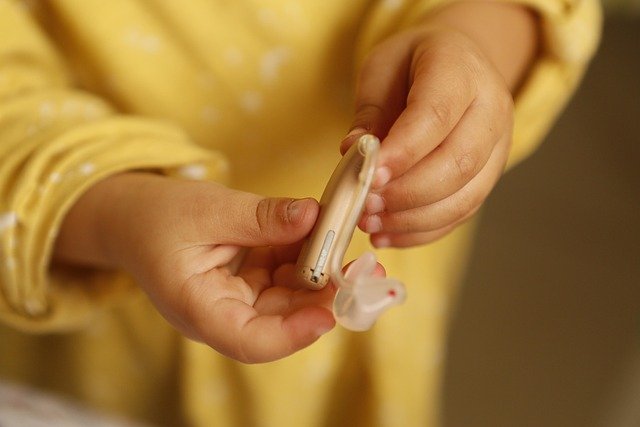Recognizing sizing cues: when to adjust fit for growing infants
Recognizing when to change diaper size can help maintain comfort and reduce leaks as infants grow. This article outlines practical signs to watch, how materials and absorbency matter, and considerations for hygiene, rash prevention, overnight use, travel, packing, and budget-conscious choices.

As infants grow, diaper fit changes quickly and small misfits can lead to leaks, discomfort, or skin irritation. Parents and caregivers can learn to read visual and tactile cues—waist and leg gaps, red marks, sagging—so adjustments happen proactively rather than reactively. Observing how a diaper performs during active periods, at night, or after feeding provides practical indicators for sizing changes without relying solely on weight charts.
This article is for informational purposes only and should not be considered medical advice. Please consult a qualified healthcare professional for personalized guidance and treatment.
How does sizing affect infant comfort and fit?
Diaper fit directly relates to infant comfort and general wellbeing. A diaper that is too tight may leave red indentations on the waist or thighs and restrict movement, while one that is too loose allows gaps at the legs and back where leaks can start. Check for snugness by sliding a finger along the waistband and leg cuffs—there should be a little give without bunching. Comfort also influences sleep and feeding; a poorly fitting diaper can disturb an infant, so aim for a fit that sits flat, moves with the baby, and maintains consistent coverage.
When should newborn sizes be changed?
Newborn sizes typically fit for the earliest weeks, but growth spurts can make a size change necessary quickly. Indicators include the diaper rising to the baby’s ribs, frequent leakage despite correct fastening, and closure tabs not reaching comfortably. For some newborns, switching from a newborn size to an infant size occurs within a month; others remain in newborn size longer. Use physical cues and changing frequency alongside weight ranges on packaging rather than waiting for routine milestones. Always re-evaluate after a growth spurt or when clothing sizes change.
How do absorbency and leakproof features influence sizing?
Absorbency and leakproof design help performance but do not replace correct fit. A highly absorbent diaper can mask fit issues by holding more moisture, yet leaks may occur at the seams or leg openings if gaps exist. When sizing up, be aware that a larger diaper often contains more absorbent material but may shift more on a small infant. Balance the need for overnight absorbency with secure leg and waist seals. If leaks repeat despite absorbent layers, revisit sizing and fastening placement before assuming product failure.
What role do materials and breathability play?
Materials and breathability affect comfort and skin health. Softer, breathable fabrics reduce heat and moisture buildup, lowering the risk of irritation. Natural or plant-derived materials can feel gentler on newborn skin, while synthetic layers often enhance moisture-wicking and leakproofing. If a diaper traps heat or feels damp to the touch at the edges, consider changing sizes or styles with better airflow. Proper fit supports breathability as well: when a diaper is too tight, airflow reduces and humidity increases in skin folds.
How can diapers help prevent rash and support hygiene?
Good hygiene practices combined with properly fitting diapers reduce the likelihood of diaper rash. A correctly sized diaper keeps urine and stool away from the skin longer and prevents chafing from friction. Frequent changes, gentle cleansing, and allowing skin to dry before applying barrier cream matter regardless of brand. Watch for persistent redness, bumps, or areas that worsen after changes; these signs may indicate chafing from poor fit, sensitivity to materials, or a need for a different diaper type that offers more breathability or absorbency.
What to consider for sustainability, travel, packing, and overnight use?
When selecting diaper sizes for travel or overnight use, consider both capacity and packability. Overnight situations benefit from diapers with higher absorbency and secure leg cuffs; however, bulkier overnight diapers require more packing space. For travel, compact, well-fitting diapers that balance absorbency and breathability are practical. Sustainability choices—biodegradable materials or reusable cloth—also affect sizing decisions because reusable options rely on secure closures and correct sizing for leak control. Budget considerations may favor buying larger packs of a single size, but frequent growth may make size-mixes or smaller packs more economical for growing infants.
A final check: if fastening tabs consistently land in different positions, if there’s pooling in the front or back, or if diaper changes become more frequent despite proper use, it’s time to reassess size. Observe your infant in motion and during sleep to make a sizing choice that supports comfort, hygiene, and functionality.
Recognizing and responding to sizing cues helps maintain comfort and reduce common problems like leaks and rash as infants develop. Using physical signs, understanding how absorbency and materials influence performance, and matching diaper choices to overnight, travel, or sustainability priorities will support healthy skin and more predictable care routines.






